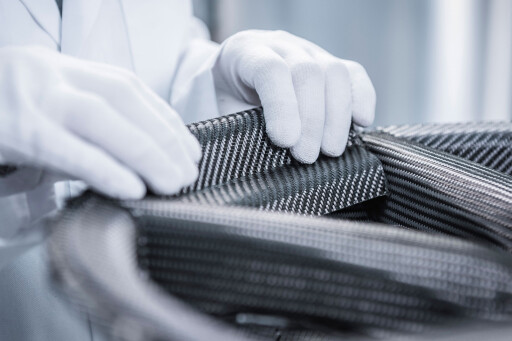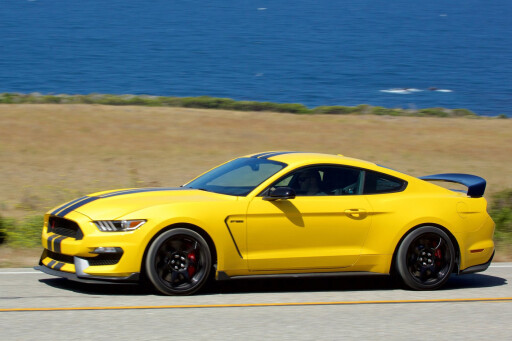
If there ever was someone whose name less suited their invention, it’s Roger Bacon.
MOTOR's Geek Speak?
Born in 1926 in Cleveland, Ohio, the man named after cured pork also invented the wondrous structural material that’s among the lightest and strongest ever invented by man. And like other great scientific advances in the 20th century, his discovery in 1958 was a surprise.
 While trying to find graphite’s triple-point – when its liquid, solid, and gas states reach temperatures where conduction stops – something unexpected happened. Carbon vapour would not first transform into liquid, but into small, inch-long fibres – ones that were 10 times stronger than steel and almost four times stiffer.
While trying to find graphite’s triple-point – when its liquid, solid, and gas states reach temperatures where conduction stops – something unexpected happened. Carbon vapour would not first transform into liquid, but into small, inch-long fibres – ones that were 10 times stronger than steel and almost four times stiffer.
The genesis then, for carbon fibre. But one which, at the time, Bacon estimated would cost US$22 million per kilogram to make. With such high investment required, first applications either had wings or were rocket propelled. But around the early 1980s, manufacturing processes started to make leaps forward.
 McLaren would be the first to build its Formula One racers around it. Since then, racecars have been consumed by the material, while boutique brands like Pagani and Koenigsegg have made it their car’s USPs. However, despite big gains in safety and efficiency up for grabs, its uptake in the mass market has been much slower.
McLaren would be the first to build its Formula One racers around it. Since then, racecars have been consumed by the material, while boutique brands like Pagani and Koenigsegg have made it their car’s USPs. However, despite big gains in safety and efficiency up for grabs, its uptake in the mass market has been much slower.
Why carbon fibre might struggle to gain traction at the boardroom level is the fact it’s an expensive structural component. Use it purposefully in small amounts, like suspension arms where it’s not visible, and the marketing department can’t sell it very easily. Nor would an average driver feel it.
Use it for the body or chassis, where it’s both seen and felt, and costs quickly start to climb. However, it’s starting to get a roll on with wheels. As the bigger-is-better trend gains pace, makers are being forced to use it to unlock new performance gains.
 Carbon-fibre wheels mean suspension bushes, dampers, and springs have less deflected weight to fight. It also lightens the ballast on each steering rod, reducing steering effort. Meanwhile, rotational inertia improves, too. Imagine each rim as a flywheel. When lighter, less energy is needed for them to spin up or slow down.
Carbon-fibre wheels mean suspension bushes, dampers, and springs have less deflected weight to fight. It also lightens the ballast on each steering rod, reducing steering effort. Meanwhile, rotational inertia improves, too. Imagine each rim as a flywheel. When lighter, less energy is needed for them to spin up or slow down.
That’s handling, ride, braking, acceleration, and weight improved with one modification. The unique look is also a marketing dream, too. For Porsche engineers, who work on the largest wheels and tyres in the biz, it must be a godsend.
And while Koenigsegg and Ford both offered OE carbon wheels before Porsche, Stuttgart differentiates itself with its manufacturing method. Which, for the 911 Turbo Exclusive Series, and as you can see, is pretty space-age.
Crunch Time - The Performance Difference
Theorising is all well and good at the pub, but let’s talk about the real difference carbon-fibre wheels make in practice.
We haven’t had the chance to test any of these carbon-fibre OEM cars, yet, however, Car And Driver has. The publication put a Ford Mustang GT350, which has aluminium wheels but the same 392kW V8, against a GT350R which comes equipped with carbon-fibre wheels.
 The test was strictly straight line and done from a roll, to negate the GT350R’s wider tyre widths and stickier tyre compound. The GT350R was 0.9sec quicker from 50km/h to 80km/h in top gear; 0.8sec quicker from 50km/h to 113km/h in top gear and 1.2sec quicker from 50km/h to 210km/h in fourth gear.
The test was strictly straight line and done from a roll, to negate the GT350R’s wider tyre widths and stickier tyre compound. The GT350R was 0.9sec quicker from 50km/h to 80km/h in top gear; 0.8sec quicker from 50km/h to 113km/h in top gear and 1.2sec quicker from 50km/h to 210km/h in fourth gear.
Meanwhile, coast down from 97km/h was cut by 48m to 1458. Of course, there’s a less quantifiable difference felt by the driver in carbon-fibre wheel equipped cars. However, Ford Performance engineers say they measured a lighter steering effort and more absorbent ride quality on the GT350R.
Just about proving there’s not much these wheels can’t do.
GIANT WEAVER
How they're made
1. WHAT A YARN
Porsche uses carbon-fibre braiding which involves fibres taken from multiple yarns on a radial wheel that are then intermingled in a prescribed pattern over a mandrel. For Porsche, this forms the wheel drum, which is mated to a wheel centre assembly made of pre-cut carbon-fibre fabric.
2. FASTER, STRONGER
The preform wheel is then pumped with resin and baked at high temperature. Once cool, a lacquer is applied for finish and heat resistance. The end result are wheels 20 per cent lighter and stiffer. Don’t forget, these are 20-inch tall wheels, 11 inches wide. On-limit handling improves as stiffer wheels resist camber deflection under high loads.
3. NOT THE ONLY ONE
Braided wheels boast excellent rigidity and durability thanks to a more consistent production process. For comparison, Koenigsegg’s and Ford’s GT350R wheel are 40 per cent lighter, however, it’s unknown how much stiffer they are than a regular aluminium wheel. The Swedish hypercar maker uses a pre-preg method while Ford’s supplier remains tight-lipped about its patented process.
4. LESS IS MORE
Porsche might be telling porkies about its braider wheel being the largest in the world, however, such complex technology does ask for huge investment – the wheels are a circa-$20K option. The upside is braiders can adjust yarn numbers, angles, speed, tension, and fibre type to meet a wider range of requirements and purposes. It’s also a lot more efficient, needing only 18km of fibre compared to the 25,484km needed for Ford’s wheels (which are made in Geelong, Victoria, incidentally).

COMMENTS